Top 10 Most Bizarre Foods in the World
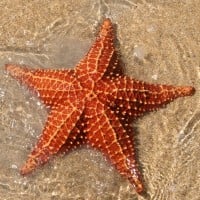 Starfish or sea stars are star-shaped echinoderms belonging to the class Asteroidea. Common usage frequently finds these names being also applied to ophiuroids, which are correctly referred to as brittle stars or "basket stars".
Starfish or sea stars are star-shaped echinoderms belonging to the class Asteroidea. Common usage frequently finds these names being also applied to ophiuroids, which are correctly referred to as brittle stars or "basket stars". Places eaten: Mainly Asian countries including China, Indonesia, Micronesia, and Japan
The meat is mostly eaten, but the other parts of the starfish are known to be unsuitable or even toxic. It's rather a salty taste with a bitter undertone and feels pretty tender on the mouth
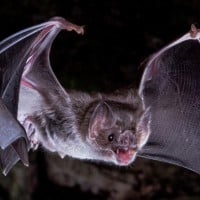 Bats are mammals of the order Chiroptera. With their forelimbs adapted as wings, they are the only mammals capable of true and sustained flight. Bats are more agile in flight than most birds, flying with their very long spread-out digits covered with a thin membrane or patagium. The smallest bat, and... read more
Bats are mammals of the order Chiroptera. With their forelimbs adapted as wings, they are the only mammals capable of true and sustained flight. Bats are more agile in flight than most birds, flying with their very long spread-out digits covered with a thin membrane or patagium. The smallest bat, and... read more Places eaten: Vietnam, China, Philippines, Indonesia, and some West African/Pacific countries
It's possible that they have been hunted as food since the prehistoric times - mostly in the Pacific regions. Fruit bats usually have a taste resembling of chicken. Although eating bats can come with risks, such as neurological diseases. It's speculated that both Ebola viruses and coronaviruses may have originated from these animals.
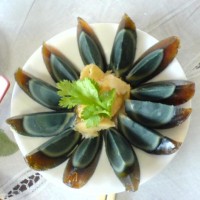
Also known as hundred-year-eggs as the name suggests, although they can be also called thousand-year-eggs. Preserved by using a mixture of clay, wood ash, and salt, century eggs are usually eaten in China. It's commonly thought that these eggs are rotten due to their "age", but contrary to this belief it's perfectly safe to eat due to it being long preserved. The eggs contain a unique rich texture when eaten, but it's recommended to pair it with other foods and condiments like soy sauce; it's an acquired taste for many.
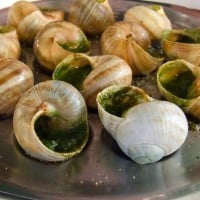
Places eaten: French, Spain, Portugal, Italy, African countries such as, Morocco, Albania, and most Asian (especially Southeast Asian countries) such as Philippines, and Indonesia.
Escargot is known to have a considerable amount of protein when eaten. In France they are usually served with butter, parsley, garlic, which makes the taste resemble more like clams or depending on the sauce you put into it.
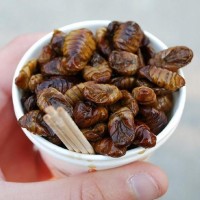
Plenty of people see this kind of food to be disgusting due to its appearance in first glance, but apparently this is a popular street food in South Korea which consists of silkworm pupae. Beondegi literally translates to "pupa" in English. If you've been in South Korea fat chances are you've probably encountered someone offering you this food. It has a nutty texture and it's usually either steamed or boiled with soy sauce. Delicious? Probably not.
Also known as deep fried silkworm pupae.

Apparently tastes like chicken, much like frog legs.
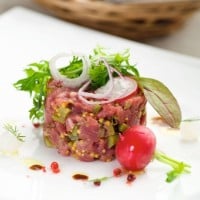
Steak Tartare is usually comprised of raw chunks of sliced beef served with capers, onions, and other seasonings as the picture suggests. Since the meat is being served raw, its temperature is kept cold. Because of the concerns regarding raw meat, the risk can be actually low since there's an emphasis of safety in restaurants serving this food.
Steak Tartare is cow meat eaten at its raw form.

Muktuk might look some kind of watermelon slices but it's actually blubber coming from whales (particularly the bowhead whale). It's a traditional food eaten in the Arctic which can be either eaten raw or cooked, and is usually chewy and salty. It's especially popular among the Inuits and is known to contain a rich soruce of Vitamin C.
Muktuk is straight up whale skin and blubber. It's eaten raw.
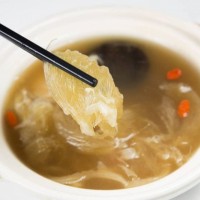
Places eaten: China, Taiwan, and parts of Southeast Asia
A traditional yet luxurious food originated in China that is commonly served in weddings and other festivities. The shark fin itself is tasteless, but it's revered for its usually chewy texture. There are many claims about shark fins having properties "enhancing" the body in various ways - including qi energy, prolonging human life, or even preventing cancer or heart disease. Contrary to that, shark fins have no nutrition or benefits. Despite common beliefs, shark fins can contain high concentrations of mercury and should be eaten in moderation.

Places eaten: Various SEA countries, China, England (formerly), and the United States.
Commonly seen as a delicacy, this might be surprising for some considering it's also eaten in the US, but it's not common. In some US restaurants, the common snapping turtle is served. Apparently, turtle soup was also popular in England but quickly stopped due to concerns of overfishing.